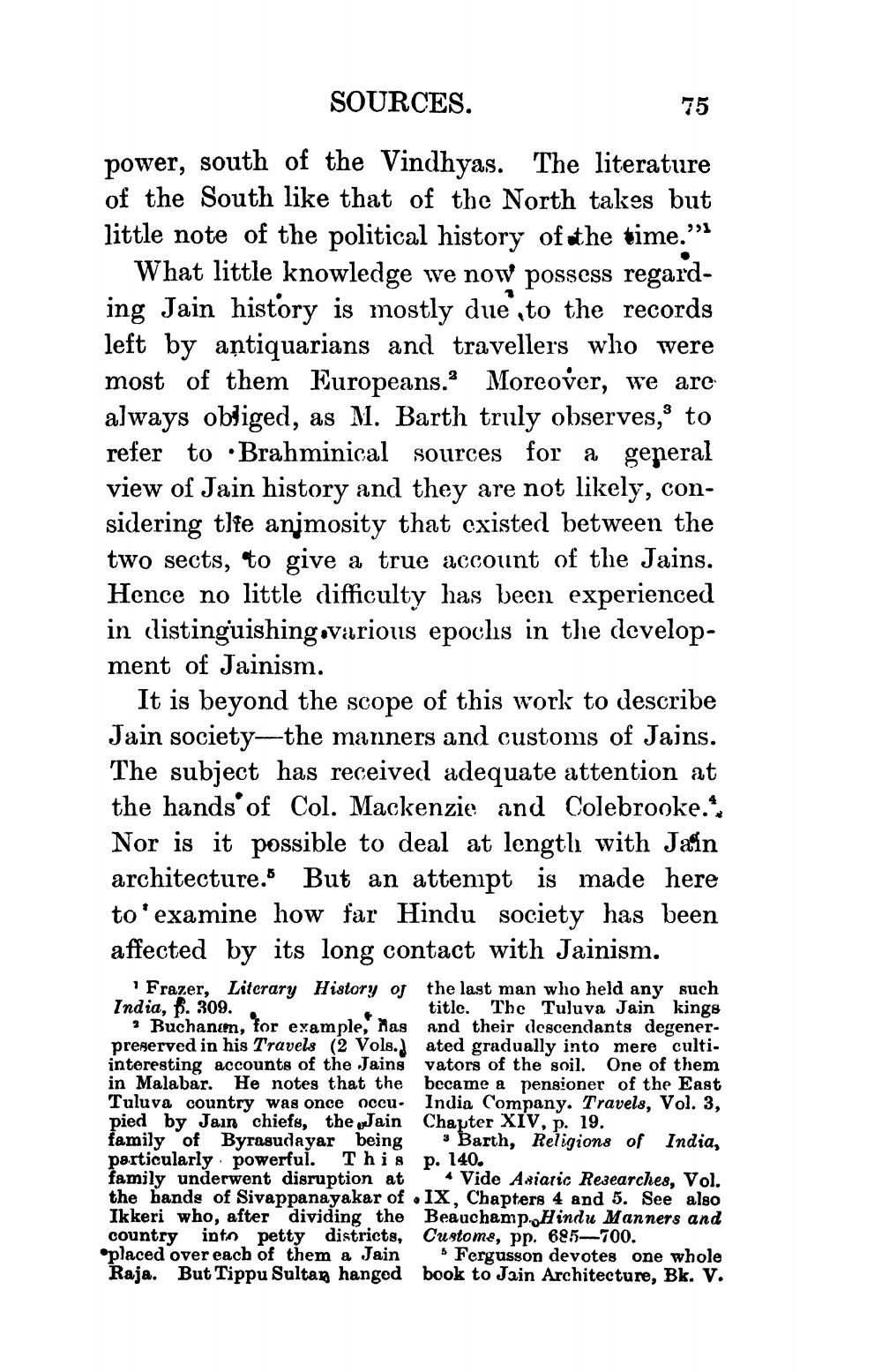________________
SOURCES.
75
power, south of the Vindhyas. The literature of the South like that of the North takes but little note of the political history of the time.""
What little knowledge we now possess regarding Jain history is mostly due to the records left by antiquarians and travellers who were most of them Europeans. Moreover, we are always obliged, as M. Barth truly observes, to refer to · Brahminical sources for a general view of Jain history and they are not likely, considering tlfe anjmosity that existed between the two sects, to give a true account of the Jains. Hence no little difficulty has been experienced in distinguishing various epochs in the development of Jainism.
It is beyond the scope of this work to describe Jain society—the manners and customs of Jains. The subject has received adequate attention at the hands of Col. Mackenzie and Colebrooke. Nor is it possible to deal at length with Jain architecture. But an attempt is made here to'examine how far Hindu society has been affected by its long contact with Jainism.
Frazer, Literary History of the last man who held any such India, B. 309.
titlc. The Tuluva Jain kings • Buchanen, for example, Mas and their descendants degenerpreserved in his Travels (2 Vols. ated gradually into mere culti. interesting accounts of the Jains vators of the soil. One of them in Malabar. He notes that the became a pensioner of the East Tuluva country was once occu. India Company. Travels, Vol. 3, pied by Jain chiefs, the wain Chapter XIV, p. 19. family of Byrasudayar being Barth, Religions of India, particularly powerful. This p. 140. family underwent disruption at Vide Asiaric Researches, Vol. the hands of Sivappanayakar of IX, Chapters 4 and 5. See also Ikkeri who, after dividing the Beauchamp. Hindu Manners and country into petty districts, Custome, pr. 685-700. placed over each of them a Jain Fergusson devotes one whole Raja. But Tippu Sultan hanged book to Jain Architecture, Bk. V.
prenesting accountotes that the India Comp, p: 1978 of India,




